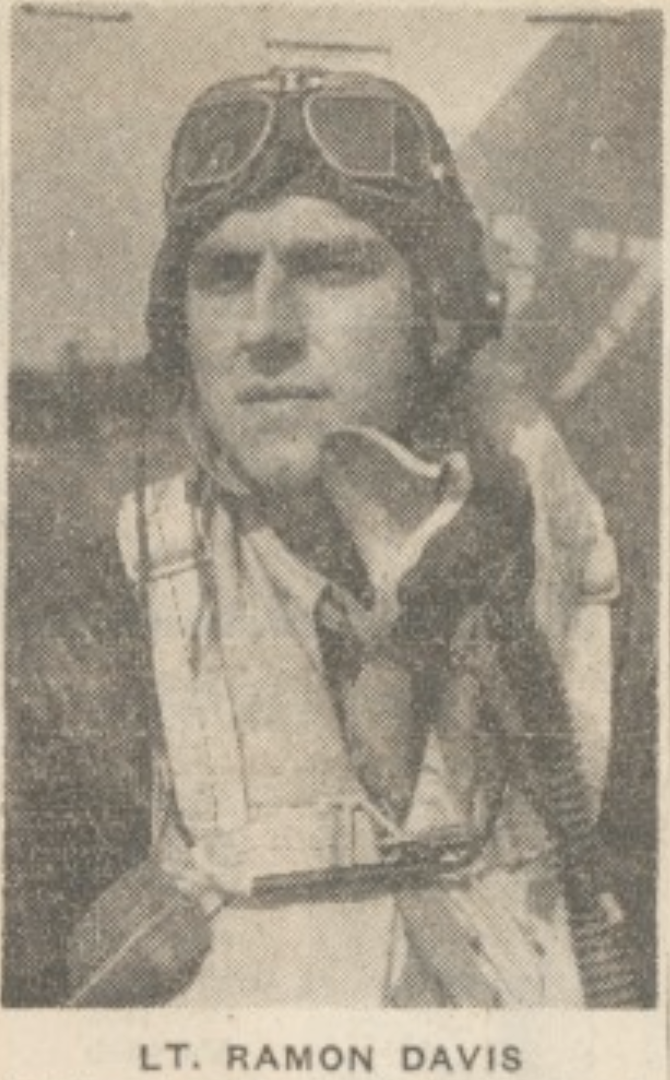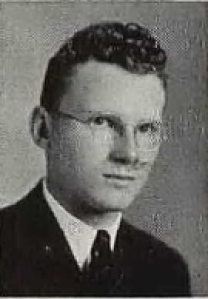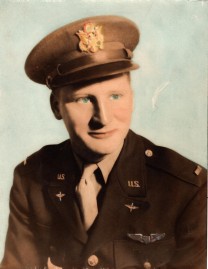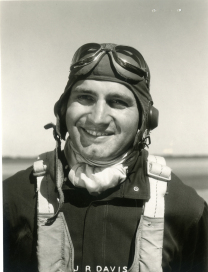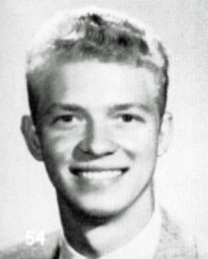AMES, Iowa – Capt. Ramon Roderick Davis attended Iowa State only a few short months before his commitment to his country led him to become a World War II fighter pilot. Davis was a veteran of two wars, serving in both World War II and the Korean War before he went missing following an emergency landing along a Korean river in 1950. He is among five veterans to be honored during Iowa State's 2022 Gold Star Hall Ceremony on Nov. 7.
Davis was born in Ames on Oct. 12, 1924. He was the younger brother of James Davis, another WWII veteran honored during Iowa State’s 2022 Gold Star Hall Ceremony. He graduated from Ames High School in 1942 and attended what was at the time Iowa State College. Davis majored in forestry but was at Iowa State for only two-and-a-half months. Davis enlisted in the U. S. Army on Nov. 14, 1942, in Des Moines, Iowa, and was deployed with the 63rd Fighter Squadron, part of the 56th Fighter Group, to RAF’s Boxted Air Base in Britain on Jan. 9, 1943.
The 56th Fighter Group was an elite force known as the wolfpack. The group was the second most successful group in air-to-air combat in the entire U.S. Army Air Forces, participating in air support for the invasion of Normandy in June of 1944 as well as the Battle of the Bulge at the end of 1944. Because of its actions attacking anti-aircraft sites in the Netherlands, the group earned a distinguished unit citation. At the time that Davis received his distinguished unit citation, his unit had destroyed 550 German planes in the air plus another 50 on the ground and was the highest scoring group in the 2nd Bombardment Division. While stationed in Britain, Davis flew sorties with his P-47 Thunderbolt aircraft over northern France, the Rhineland, Ardennes and Germany. In September of 1944 Davis was promoted from 2nd lieutenant to 1st lieutenant for his role in bombing a railyard in Nazi-occupied France. Davis and seven other pilots destroyed 20 locomotives, 25 railcars, 17 trucks and six barges in the strafing attacks.
Davis left Britain for the United States in April of 1945. What was supposed to be only a few months of leave turned out to be permanent when V-E Day came only a month later. After arriving home, he spoke with a journalism class on his experiences of the war. He believed that the United States’ advantage lay in the fast thinking and good training of its pilots. The end of World War II, however, did not mark the end of his military career.
Davis entered the Korean War with the 12th Fighter Squadron and the 18th Fighter-Bomber Group at the onset of the war. He was stationed at Pusan Air Base in South Korea flying F-51 Mustangs. Just a few months into the war on Oct. 5, 1950, Davis departed Pusan Air Base as the flight leader in a two-plane armed reconnaissance mission over North Korea. Over Sunchon, North Korea, Davis's plane was hit by enemy anti-aircraft fire. Davis tried to turn back and reach the safety of South Korea, but he was not able to fly that far. Davis was forced to land his aircraft on a sandbar in the Taedong River. He was seen getting out of his plane and waving to the pilot of the other plane in his sortie before walking into the hills east of the river. That was the last time Davis was seen. The heavy enemy presence in the area made it impossible to conduct search and rescue operations. While designated as missing in action Lieutenant Davis was promoted to the rank of captain.
After the war, no prisoners of war who returned had seen or heard about Davis being captured or held anywhere, and no remains that were returned to the United States after the ceasefire matched his description. Capt. Ramon Roderick Davis remains one of over 7,600 Americans who are still unaccounted for from the Korean War.
